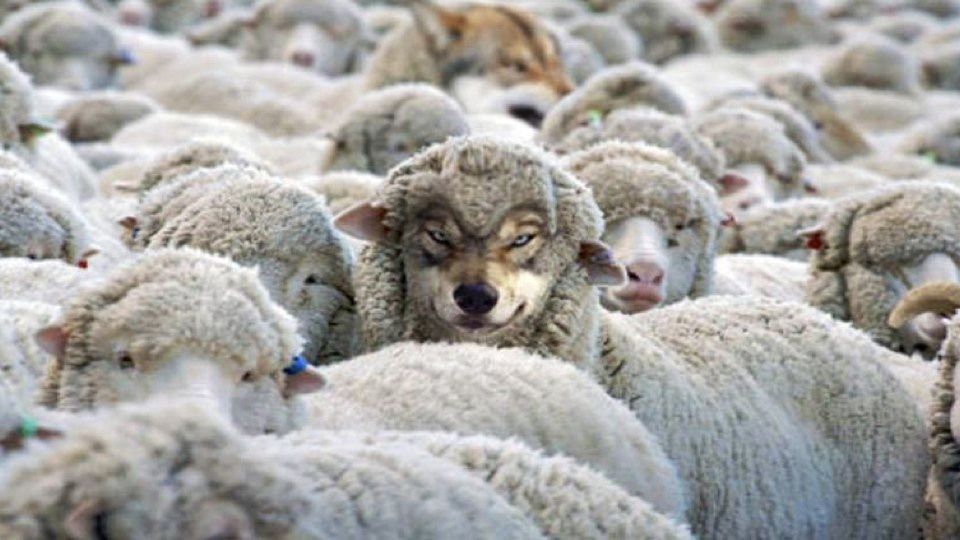
I’ve been thinking a lot about what happens when overlay companies and their employees are allowed, welcomed or even invited into Accessibility spaces. Whether that’s into communities, to speak on podcasts, sponsor events or within online spaces. To me, their presence raises serious concerns.
Some people argue that “exclusion never helps anyone”, or that allowing everyone in “educates real people doing the real work”. But I keep coming back to a quote I saw recently:
“You can say “all are welcome,” but if wolves and sheep are both welcome, then you’ll only end up with wolves. The smart sheep will go somewhere else, and the naive sheep will be eaten and processed.” - Adam Bates
What’s the impact of bad actors in Accessibility spaces?
Where to start…
They learn the language of legitimacy
When harmful or performative actors spend time near authentic practitioners, they absorb the vocabulary, frameworks and tone of genuine work. They then repackage this language for marketing purposes. The result is confusion - it becomes harder for outsiders to tell who’s doing real accessibility work and who’s just performing it.
They map and exploit networks of influence
One of the most insidious harms comes from how these actors use proximity to gather intelligence. By joining community spaces, they quietly learn who holds power, who influences decisions, who trusts whom and where opportunities lie. They build informal lists of names, relationships and alliances that can later be exploited, for lobbying, marketing or recruitment.
Over time, they turn community networks into contact lists for exploitation. The knowledge meant to strengthen disabled communities becomes fuel for corporate strategy.
They direct money away from people doing the real work
When companies invest in overlays or similar performative solutions, that money flows to these shareholders. Not to disabled or Accessibility people doing the real work. Resources get misdirected, and the people most affected gain nothing, if anything things are much worse as a result.
They distort the culture of the space
These spaces often rely on trust, openness and accountability. Introducing bad-faith participants forces others to become guarded or defensive, weakening collaboration and honesty.
Personally, I often wonder, do I want to speak in a space where someone might literally be paid to disagree with me in bad faith.
They manipulate credibility through association
By appearing at events, on podcasts or alongside real experts, these actors gain unearned legitimacy. To the public, proximity can look like partnership or endorsement. The illusion of credibility is powerful and dangerous. They replicate and embed harmful power dynamics. These actors can dominate conversations, taking up space that should belong to the community.
They use narratives and lived experience
Hearing genuine stories allows them to borrow, reshape or reframe those disabled or accessibility experiences as their own. They use photos and stories of real disabled people to build credibility, diluting or overwriting the voices of those they claim to represent.
They drain emotional and cognitive labour
Real practitioners are forced to spend time educating or defending against these actors instead of driving meaningful change. Energy that could go towards progress is spent on damage control - explaining, yet again, why these products and companies are harmful.
They create confusion for external stakeholders and non-technicals
Budget holders, non-technical stakeholders and the public struggle to distinguish genuine work from performance. This confusion blurs the line between authentic and performative, weakening support for those actually making a difference. They make future collaboration harder. Rebuilding trust takes far longer than protecting it in the first place.
It’s a bit like..
It’s like a polluting energy giant funding a climate justice summit, framing themselves as “part of the transition” while using the opportunity to stall real change. It’s a landlord turning up to a tenants’ rights forum, pretending to want “fair housing” while their presence silences those most affected. Or a tobacco company joining a lung-health charity board in the name of “corporate responsibility,” using the association to look ethical while continuing the harm.
Inviting overlay companies or other bad actors into accessibility spaces isn’t collaboration, it’s more like sabotage disguised as inclusion. These are not allies, they are opportunists. Their presence distorts purpose, manipulates trust and turns genuine community work into a marketing asset. Letting bad actors into accessibility spaces doesn’t build bridges - we give them blueprints for how to exploit us.
What can we do?
Inviting overlay companies and other performative actors into genuine Accessibility spaces isn’t harmless. It compromises trust, distorts the message, and damages the integrity of the work. These spaces exist to empower communities, not to provide cover or a data-mine for those exploiting them.
Should these people and their employees actually be welcomed into in these spaces?
Who actually benefits from their presence?